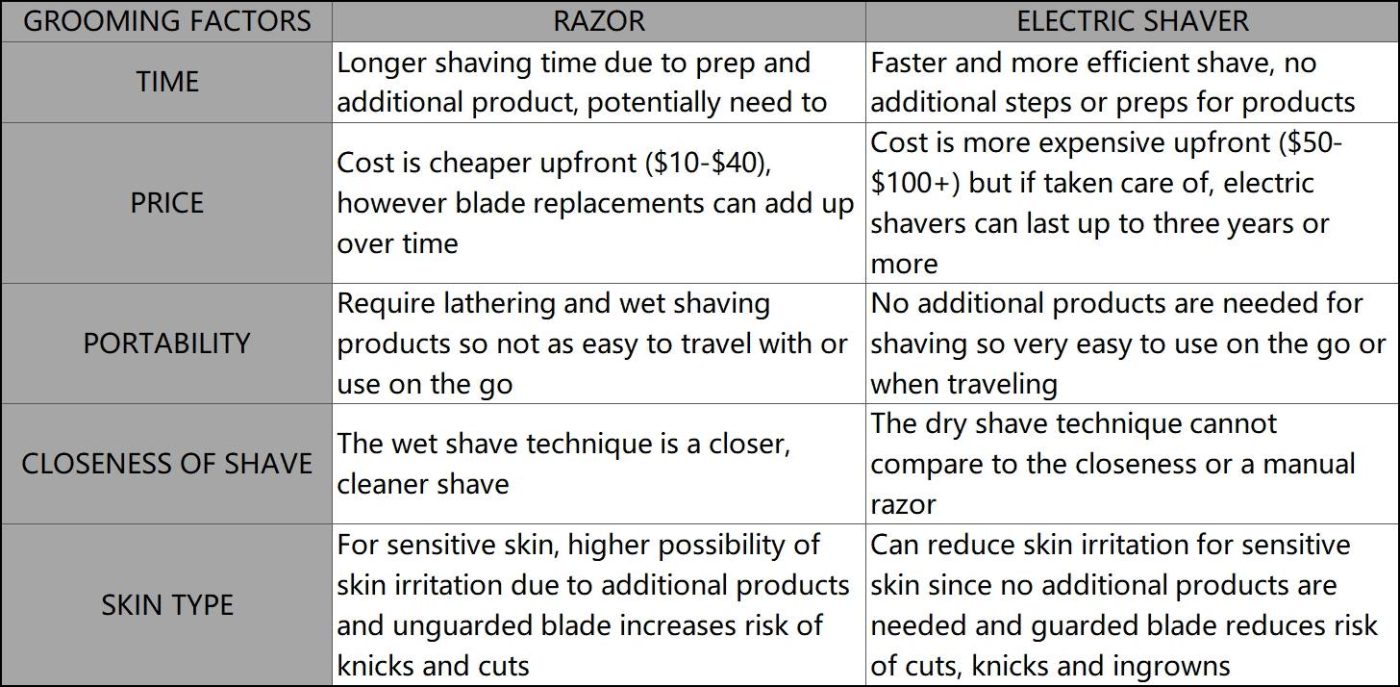Choosing between an electric shaver and a manual razor can be a daunting task. In this article, we’ll explore the key differences, advantages, and disadvantages of electric shavers and razors to help you make an informed decision based on your preferences and needs.
Electric Shavers: The Basics and Pros/Cons
Electric shavers consist of a thin perforated metal foil and an “undercutter” with tiny blades that move rapidly beneath the foil. They leverage the skin’s elasticity, pressing down to create a bow wave effect and cut hair efficiently. Here are the pros and cons of electric shavers:
Pros:
1. Time Efficiency: Electric shavers provide a fast and efficient shave.
2. Portability: Easy to travel with, capturing cut hairs to minimize mess.
3. Cost Long Term: Can last for years, reducing long-term costs.
4. Versatility: Ideal for various shaving styles and lengths.
5. Low Risk and Best for Sensitive Skin: Minimizes cuts, nicks, and ingrown hairs.
6. Easy to Clean: Some models feature built-in vacuum or self-cleaning settings.
Cons:
1. Not as Close of a Shave: May not achieve the closeness of a razor, requiring more frequent shaving.
2. Cost Upfront: Initial investment can be high, especially for premium models.
3. Harder to Replace: Replacement parts may be more challenging to find.

Manual Razors: The Basics and Pros/Cons
Manual razors, with 3-5 blades, use hysteresis to lift hair before cutting. Wet shaving is necessary, involving additional products. Here are the pros and cons of manual razors:
Pros:
1. Closer Shave: Provides the closest shave for a smooth finish.
2. Upfront Cost: Affordable initial investment.
3. Easy to Replace: Replacement cartridges are readily available.
4. Portability: Easy to travel with, though additional products are needed.
Cons:
1. Higher Risk: Greater potential for irritation, nicks, and cuts.
2. Cost Long-Term: Replacement heads and additional products can add up.
3. More Time-Consuming: Wet shaving requires more time and products.
4. Less Portable: Requires lathering and additional products.
Factors to Consider:
When deciding between an electric shaver and a manual razor, consider the following factors:
1. Time: Electric shavers are quicker, while manual razors may suit those who enjoy a traditional wet shaving routine.
2. Price Range: Electric shavers have a higher upfront cost but can be a long-term investment. Manual razors are more cost-effective initially.
3. Portability: Electric shavers offer more convenience on the go, while manual razors require additional products.
4. Closeness of Shave: For the closest shave, manual razors are the preferred choice.
5. Skin Type: Electric shavers are often better for sensitive skin, minimizing irritation.
Ultimately, the choice between an electric shaver and a manual razor comes down to personal preference, grooming habits, and lifestyle. Consider your priorities, whether it’s speed, closeness, or versatility, to determine which tool aligns with your shaving goals and suits your individual needs.

